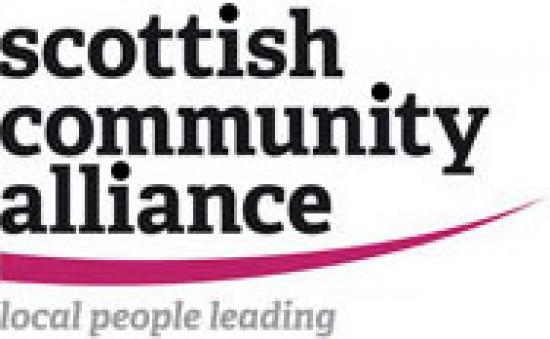Arts for all
24th January 2018

The need to express oneself creatively through some artistic or cultural endeavour appears to be an innate part of the human condition. There can be no other explanation for the sheer scale of voluntary arts based activity that occurs day in day out in communities across Scotland. It's estimated that over 10,000 volunteer-run creative groups contribute to the cultural heartbeat of this country. Kathryn Welch, CEO at Voluntary Arts Scotland, speaks up for her highly eclectic sector in advance of the Scottish Government's plans for a National Culture Strategy.
By Kathryn Welch, VAS
There are more than 10,000 volunteer-run creative groups in Scotland, from choirs and amateur drama groups, to sewing circles, poetry slams and ukulele bands. The individuals who lead these groups give their time and energy to bring vibrancy to communities and joy to so many of our lives. BBC Radio 4 presenter Sheila McClennon put it simply and effectively: "These are the people that are the cultural backbone of the United Kingdom".
At Voluntary Arts Scotland, our role is to celebrate, champion and support volunteer-led and community-based creative groups. This week I met with people who lead such groups, and asked how it feels to run them. They shared how rewarding it is, making them feel connected, useful, privileged, joyful and energised - but also what hard work it can be, leading to feelings of uncertainty, exhaustion and anxiety.
The Scottish Government is currently writing a culture strategy for Scotland; a pertinent moment to highlight the impact of community-led creative groups, and champion national-level policy to help their activity thrive. To help us understand what this vibrant, but often overlooked part of the voluntary sector needs - and feed back those needs to policy makers - Voluntary Arts recently launched the ‘Big Conversation'.
People have been telling us how important it is that we protect and prioritise spaces for groups to gather. Community centres and village halls have long been affordable and accessible places where people can meet, but are increasingly neglected, privatised or forced to raise hire costs to survive. Meanwhile, however, traditional lines between charities and businesses are blurring, with social enterprises and community-minded companies offering new possibilities for meeting spaces. The so-called ‘night time economy' offers opportunities for groups to use commercial spaces out of hours. And some grassroots groups have found imaginative, ambitious ways to create the spaces they need.
In East Ayrshire, I met the Cumnock Area Musical Production Society, who in 2015 took over the use of Barrhill Community Centre, becoming the first community organisation in the region to successfully complete a Community Asset Transfer. Under their careful stewardship, the venue has become a thriving hub for all kinds of activity, from a volunteer hub and first aid classes, to children's drama, a floral art club and an creative group for adults with mental ill-health. They are a thriving example of how community-led venues can support and empower a wider ecosystem of local activity.
What is needed from the Scottish Government is investment in, and recognition of the importance of, community venues. This includes prioritisation of community ownership (and straightforward legislation to make that happen), alongside a more radical reimagining of what ‘community space’ is, via initiatives to realise community access to public, private, out-of-use, vacant and night-time spaces.
Secondly, we need support and consideration for the capacity of volunteer-led community groups. Creative life in Scotland thrives thanks to the time and energy of volunteers. They do it for the love of their community, the people around them and their artform. But volunteers tell us that much of their energy is drained by legislation which wasn’t designed with them in mind:
‘[We need] better recognition from authorities that we do not work magic with small pots [of money], we put in hours of in-kind time to make things happen and work’... ‘[What would help is] recognition of the hard slog volunteers do to keep the organisation running’.
We need a Government commitment to simplify legislation and strengthen local democracy to allow greater leadership at community level. Groups tell us about the value of locally-managed grant funding in making appropriate investment in communities; as one group told us: ‘it currently feels like a mountain to climb for just one application’. Similarly, there is a pressing need for support to help groups navigate the sometimes impenetrable structures of local government. Clearer access to local decision-makers would enable a wider range of groups to make their voices heard.
Finally, there is a need to acknowledge how cultural activity is connected to so many aspects of our daily lives, from education to health. It is vital that all Government policy - not just its cultural strategy - considers how our lives are influenced by ongoing access to creative activity.
If we are to recognise the diversity and scale of culture in Scotland, we must celebrate the ways that creativity extends far beyond the boundaries of the professional and publicly funded arts sector. We must ensure that policy is designed to enable grassroots groups to thrive, so that they can continue to bring vibrancy, joy and connectivity to communities across Scotland.
The culture strategy for Scotland consultation process has now ended and a report is being compiled for release in 2018. For more information see the Scottish Government website.
https://beta.gov.scot/policies/arts-culture-heritage/culture-strategy-for-scotland/
This article appeared on 24 January 2018 on the Scottish Community Alliance web site - www.scottishcommunityalliance.org.uk



